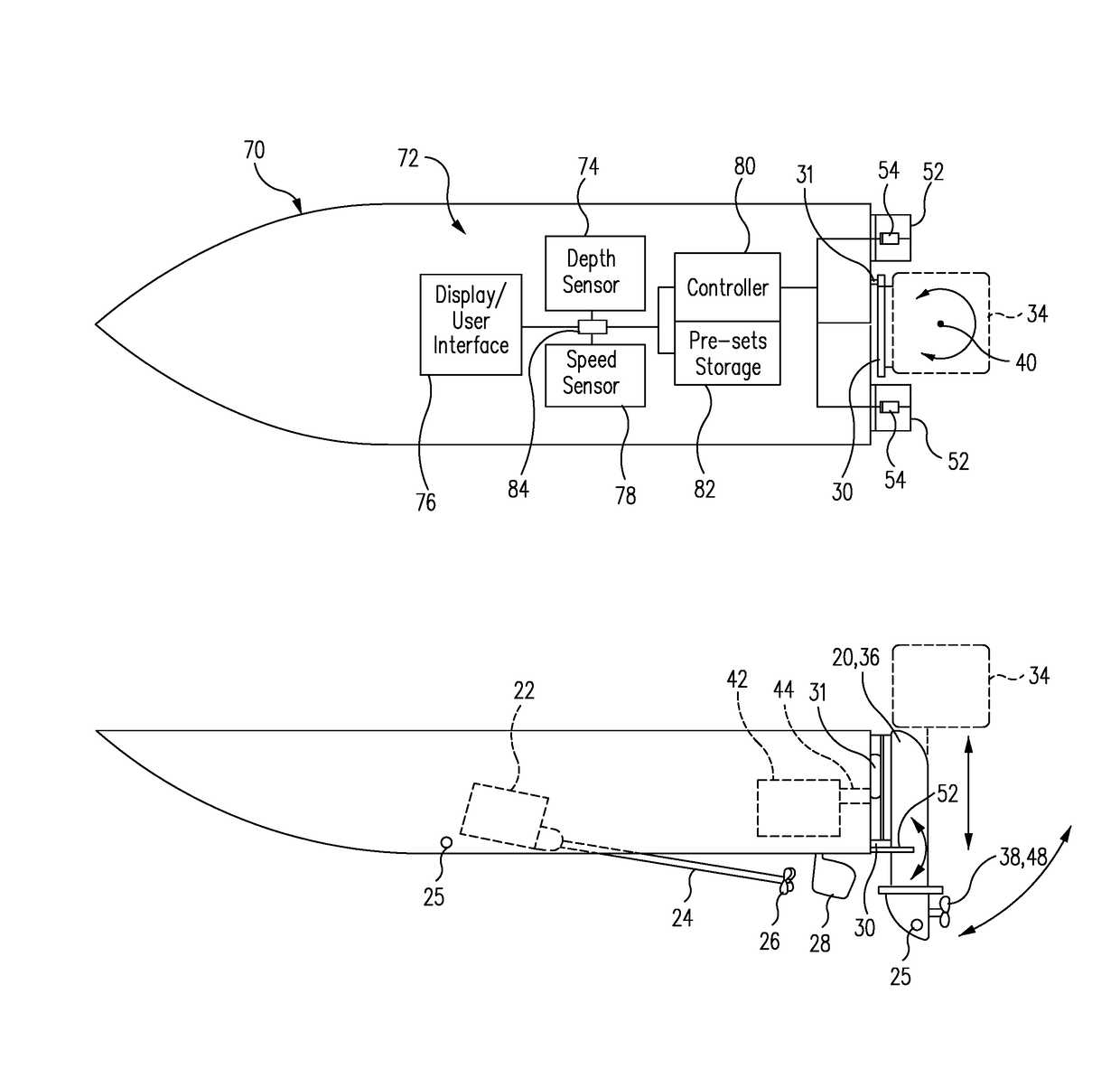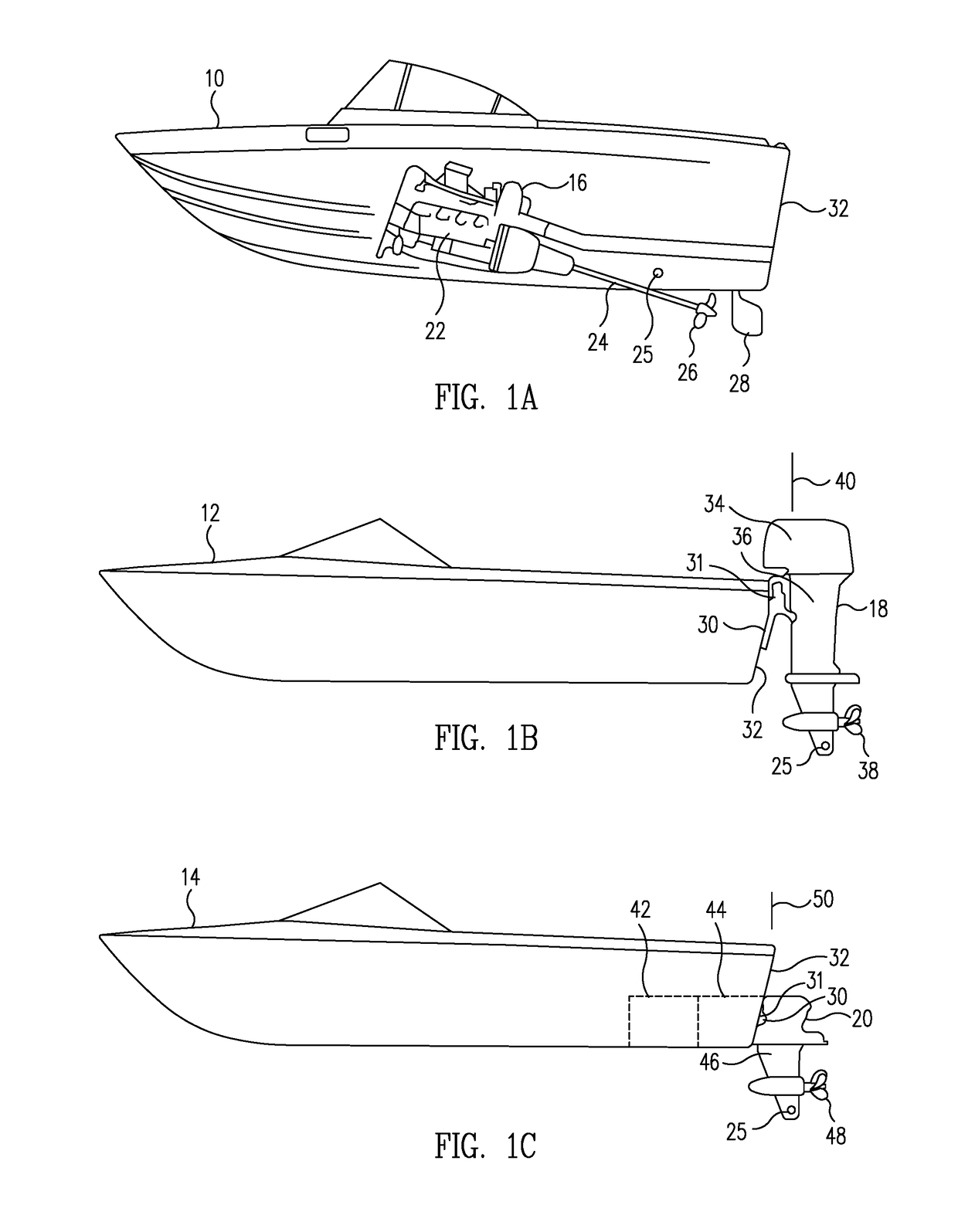Watercraft protection systems and methods
a technology for protecting systems and watercrafts, applied in the direction of marine propulsion, vessel construction, instruments, etc., can solve the problems of lack of protection schemes, less inconvenience for watercraft owners, and subject to damage, so as to protect watercrafts from damage
- Summary
- Abstract
- Description
- Claims
- Application Information
AI Technical Summary
Benefits of technology
Problems solved by technology
Method used
Image
Examples
Embodiment Construction
[0020]In accordance with the present disclosure, example embodiments of systems and methods are described for protecting watercraft propellers and, in the case of outboard or I / O drives, their associated legs, from contact with the sea bed, which enable a boat or other watercraft to run in shallow water without the need for constant manual trim adjustments, and which, during the beaching of the watercraft, automatically lifts and / or tilts the legs of outboard or sterndrives and / or any trim tabs that may be present on the watercraft at a rate corresponding to the shoaling of the floor of the corresponding body of water so as to protect them from being damaged by contact therewith.
[0021]FIGS. 1A-1C are left side elevation views of an “inboard” boat 10, an “outboard” boat 12, and an “inboard / outboard” (“I / O”) or “sterndrive” boat 14, respectively, so-named because of the drive systems they respectively incorporate, viz., an inboard drive 16, an outboard drive 18, and an inboard / outboar...
PUM
 Login to View More
Login to View More Abstract
Description
Claims
Application Information
 Login to View More
Login to View More - R&D
- Intellectual Property
- Life Sciences
- Materials
- Tech Scout
- Unparalleled Data Quality
- Higher Quality Content
- 60% Fewer Hallucinations
Browse by: Latest US Patents, China's latest patents, Technical Efficacy Thesaurus, Application Domain, Technology Topic, Popular Technical Reports.
© 2025 PatSnap. All rights reserved.Legal|Privacy policy|Modern Slavery Act Transparency Statement|Sitemap|About US| Contact US: help@patsnap.com



